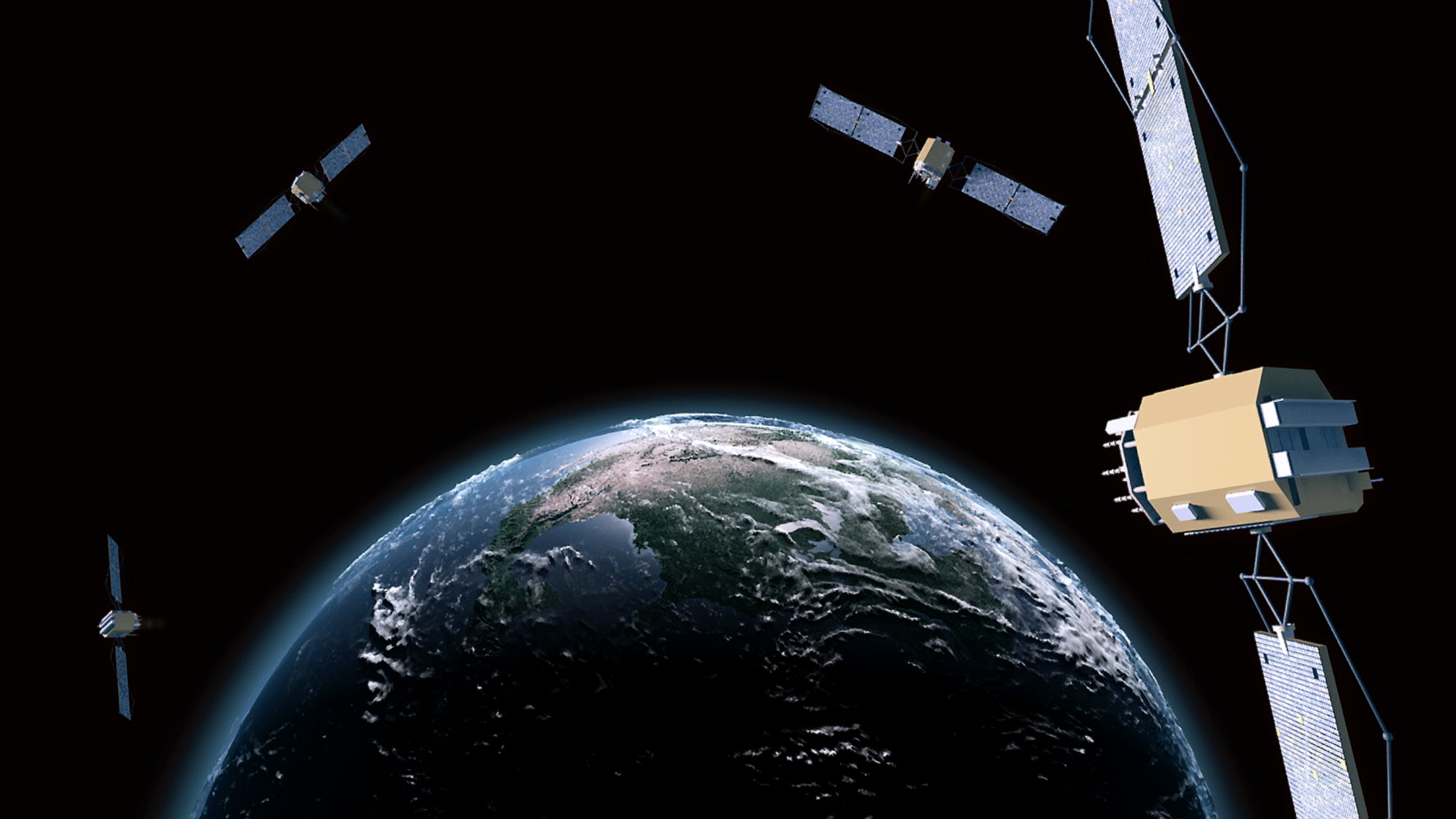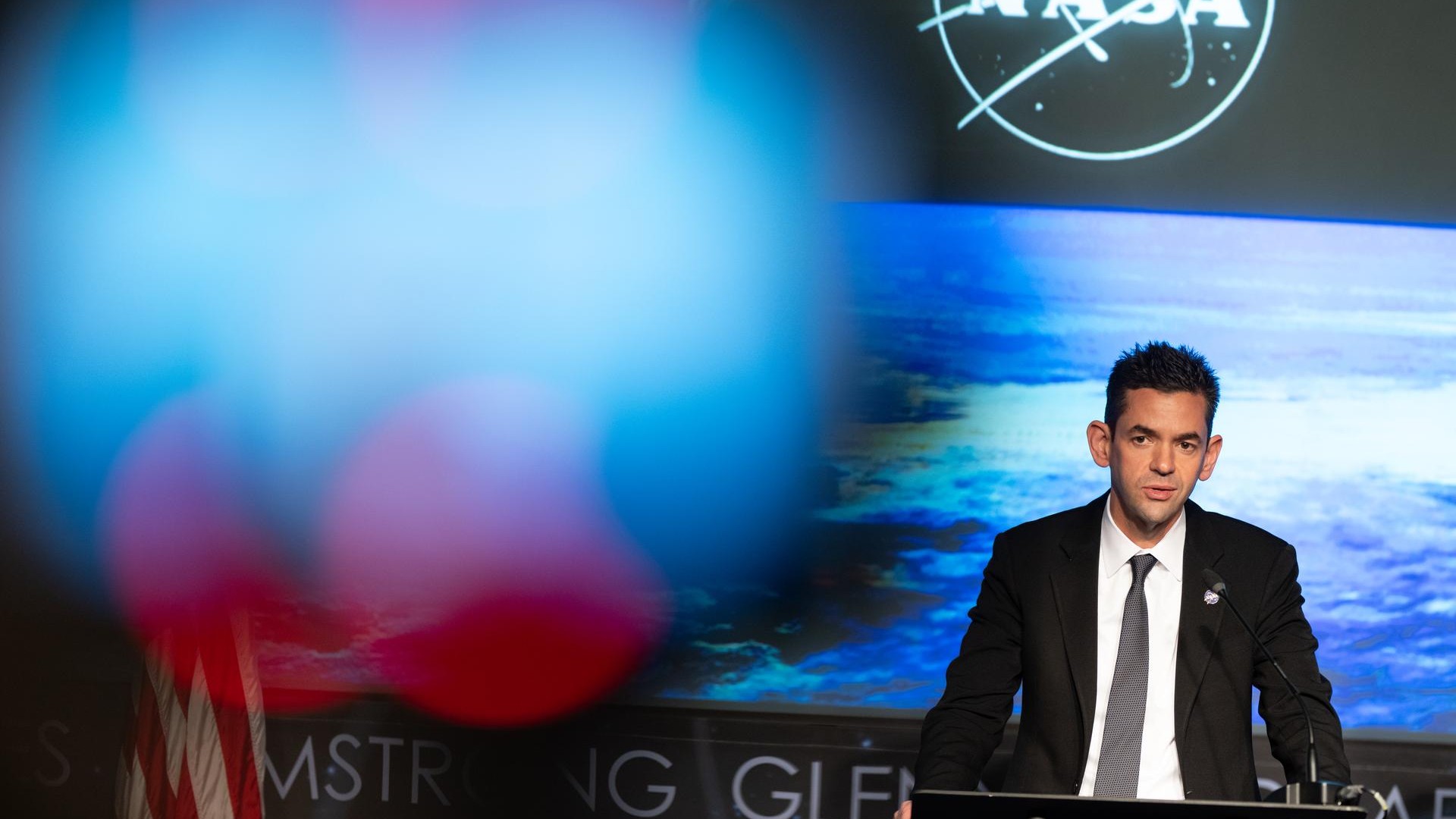
Einstein's Genius: Describing the Geometry of Space-Time

Paul Sutter is an astrophysicist at The Ohio State University and the chief scientist at COSI science center. Sutter is also host of "Ask a Spaceman" and "Space Radio," and leads AstroTours around the world. Sutter contributed this article to Space.com's Expert Voices: Op-Ed & Insights.
General relativity is one of the greatest feats of human understanding, made all the more impressive by the fact that it sprang from the fertile imagination and dogged mathematical brilliance of just one mind. The theory itself is the last and most persistent of the "classical" (i.e., not-quantum) models of nature, and our inability to come up with anything more sophisticated over the past hundred years is a constant reminder of just how dang smart Albert Einstein was.
Another testament to Einstein's genius comes in the tangled spaghetti of complex, interconnected equations that make up the full theory. Einstein made a beautiful machine, but he didn't exactly leave us a user's manual. We can trace his path in the seven years of self-inflicted torture that led to the theory's final form, but that route of development was guided by so much of Einstein's gut intuition that it's hard for us mere mortals to make the same blind jumps of genius that he did.
Just to drive home the point, general relativity is so complex that when someone discovers a solution to the equations, they get the solution named after them and become semi-legendary in their own right. There's a reason that Karl Schwarzschild — the guy who figured out the geometry of black holes — is a household name (or at least, a physics department name). [Einstein's Theory of General Relativity: A Simplified Explanation]
Geometry is destiny
The absolute core of general relativity, and a perfectly acceptable alternative name for it, is geometrodynamics. Go ahead, say it out loud — it's fun. The way that general relativity models gravity is through the dynamic machinations of space-time itself. According to the theory, the presence of matter and energy alters the fundamental space-time geometry surrounding those substances, and that altered geometry influences motion.
This relationship comes about from the most important, fundamental, can't-ignore-this concept underlying the entire theory of general relativity: the equivalence principle (E.P.). This principle is the assumption that inertial mass (how much oomph it takes to move an object) is the same property as gravitational mass (how much an object responds to gravity). And this is the key that unlocks the whole gravitational shebang.
Using that equivalence, we can imagine a scenario to help visualize the connection between geometry and gravity. Pretend you're orbiting high above the Earth, serenely watching the continents and oceans roll under your vantage point.
Breaking space news, the latest updates on rocket launches, skywatching events and more!
Then you open up a box of junk.
As the bits of debris float away from you, you ponder the ramifications of what you just did. Sure, you've now created a cloud of potentially hazardous debris that poses a major risk to satellites and future missions. But upon further reflection, your mind eases. You're doing a science experiment, and the equivalence principle guarantees that all these bits of debris, no matter their shape or mass, will perfectly trace the effects of the Earth's gravity, without the need for any other calculations. That's something unique to the force of gravity, thanks to the E.P. [Why Relativity's True: The Evidence for Einstein's Theory]
Bending the rules
Watch what happens to the junk you tossed into space. Some, by pure chance, may start off in a perfectly horizontal line. But as the objects fall to Earth, they follow straight lines heading right for the center of the globe. If you watch them closely, you'll see that as they head downward, they'll gradually converge. If they could pass through the solid Earth, they would eventually collide at the very center.
Other bits of junk might start off in a perfectly vertical line aimed toward Earth, evenly spaced apart from each other. They, too, would fall. But the lucky one at the front of the line would fall slightly faster, due to its slightly closer proximity to the Earth, with the last in line lagging slightly behind. So, as the pieces of debris continued their descent, they would slowly diverge in their vertical line.
In some cases, we get converging, narrowing trails. In other cases, we get diverging, spreading trajectories. In both cases, paths start out as perfectly parallel or uniform but change character s. These changing paths are exactly what the mathematicians use the language of "curvature" to describe, and that is the language of geometry.
Ding, ding, ding. There it is. The equivalence principle tells you that the paths of falling junk directly inform you about the nature of gravity, and those same paths reveal a complicated geometry of the underlying space-time. In other words, that gravity is the geometry of space-time.
Geometrodynamics.
Stretching our brains
tThe "time" in space-time is very important to the full theory. You've probably seen the science museum demo or graphic accompanying an article on general relativity showing what looks like a stretched rubber sheet. A heavy ball, representing a planet or star or black hole or whatever, is placed at the center, pulling the fabric down. Rolling other balls on the sheet reveals the "influence" of gravity: They try to follow straight lines, but their paths get deflected by the underlying curvature.
That demo is perfectly fine as a first, kindergarten introduction, but we're well past kindergarten now. There is no "down" in real space-time, and the curving is happening in four dimensions, not two. It is a little harder to visualize, which is why we usually retreat to the simpler demo.
It is true that a massive object distorts the static space in its vicinity, but that's only half the picture. Mass also affects the dimension of time, and it does so by altering the possible trajectories a passing object is capable of.
Every object has what's called a light cone, or a set of possible destinations that the object could reach traveling slower than the speed of light. Imagine riding along with a speck of dust as it races by the sun. It has a range of future possibilities, given by its light cone. But as the dust comes near the sun, the gravity of that giant fireball tilts the dust's light cone toward the sun itself. .The dust now has a new, more specific future assigned to it: Some destinations are off-limits (they are outside the new light cone), while others have now opened up.
This may seem like splitting hairs, but the static bending of space and the altering of light cones appear in the mathematics of general relativity in separate places, and only by combining the two effects do we get the full (and accurate!) predictions of the theory. Space and time must both be considered together; you can't ignore one.u
In other words, gravity is the geometry of space-time. Geometrodynamics.
Learn more by listening to the episode ""Seriously, What Is Gravity? (Part 3)" on the "Ask A Spaceman" podcast, available on iTunes and on the web at http://www.askaspaceman.com. Thanks to Andrew P., Joyce S., @Luft08, Ben W., Ter B., Colin E, Christopher F., Maria A., Brett K., bryguytheflyguy, @MarkRiepe, Kenneth L., Allison K., Phil B. and @shrenic_shah for the questions that led to this piece! Ask your own question on Twitter using #AskASpaceman or by following Paul@PaulMattSutter and facebook.com/PaulMattSutter. Follow us @Spacedotcom, Facebook and Google+. Original article on Space.com.

Paul M. Sutter is a cosmologist at Johns Hopkins University, host of Ask a Spaceman, and author of How to Die in Space.

